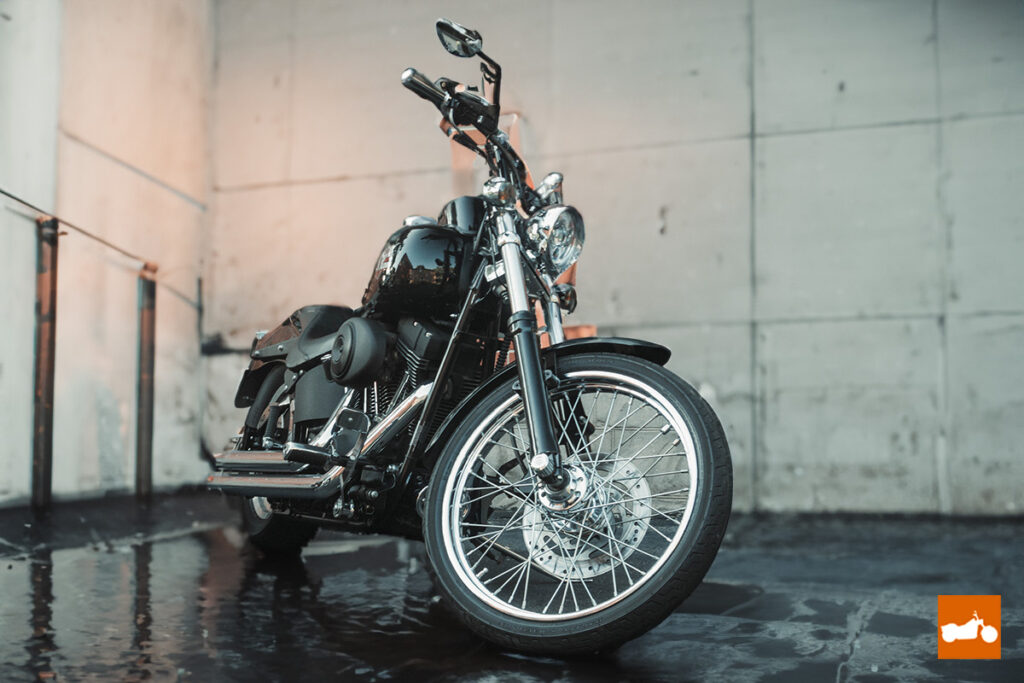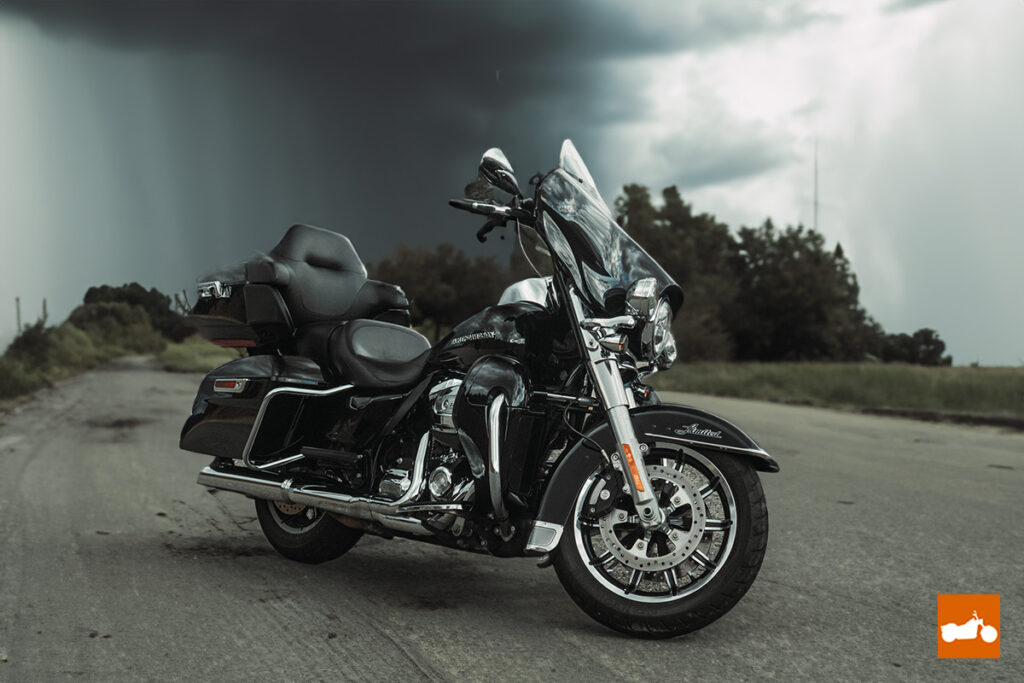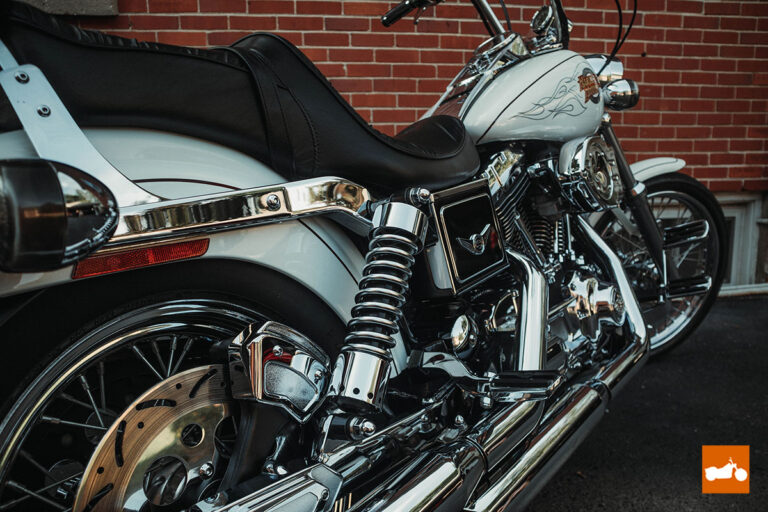Will Leaving a Harley in the Rain Cause Damage?
Rain. The enemy of gearheads, motorcyclists and detailing enthusiasts alike. We love to wash, buff, wax and perfect our beloved two and four-wheel companions. We love feeling the rush of cool air, the warmth of the sunshine and the inner peace that comes from it all. But Mother Nature has other plans for our adventures sometimes.
Nobody can predict the weather with absolute certainty, and not every rider has the luxury of a covered garage or shelter to protect their prized machine from the elements. A big source of anxiety for motorcycle riders is the effects of having a wet bike, whether it has to live outside full-time or if it just frequently gets wet on the road.
So, what should you do when the rain comes? Read on to find out.
Is it okay for a Harley Davidson to get rained on?
Generally speaking, it is okay for a Harley to get rained on with proper periodic maintenance. Motorcycles are weather-resistant in terms of their essential operation from the factory. They’re designed to operate in a wide variety of situations.
These situations include hot and cold temperatures, clean and dirty environments, dry and wet weather, and everything in between. Critical electrical components are shielded, protective coatings are applied to vulnerable surfaces, and areas that could hold water are minimized.

Your Harley Davidson should be able to withstand getting rained on if you’re able to wash it without electrical or other issues arising. Next time you’re washing your bike, soak it with water and try starting it for 30 seconds. Does it start and idle as normal?
Do the turn signals, headlights, taillights and brake lights still function fully? Are there any new errors or check engine messages in the gauges? If none of these problems arise, it is probably fine to handle rain.
Will my bike rust if I ride in the rain?
While they are built to be weather-resistant, motorcycles are not, in fact, fully weather-proof. The bike should remain functionally viable in the rain, but the cosmetic condition may suffer if not properly maintained.
Like anything made of metal, motorcycles can and will rust if they’re continually exposed to moisture without proper upkeep and protection. Motorcycles are built with a variety of materials and finishes – painted steel, aluminum, chrome, to name a few. And all of them have different requirements to keep their finishes showroom-fresh.
Consider washing your motorcycle and refreshing the protection on vulnerable surfaces regularly if you frequently ride in the rain. Exposed, unpainted surfaces like brushed and polished aluminum are the most vulnerable.
Products like S100 Total Cycle Finish Restorer are effective in removing any contaminants on the surface and returning it to a like-new finish. Then topping the restorer with a protectant like S100 Corrosion Protectant will keep the metal protected over time as it’s exposed to moisture.
The key though, will be frequency. These (and any other) protectant will not fend off rust if it’s applied once a season – consider refreshing the coatings after every 3-4 rainy rides at most to ensure lasting finish quality.
What to do after riding your Harley in the rain
Riding in the rain gets everything wet and dirty. Sure, the rain falling from the sky may be “clean”, but the roads, even pavement roads that are in good condition, will have trace amounts of dirt, oil residue and other unappealing elements that will coat you and your bike in no time.
It may be tempting to immediately dry the bike. You must fight this urge! All that unsavory grime picked up from the road will scratch the bike’s surfaces the instant they’re moved around with a dry towel.
Instead, hose the bike down and get as much of the grime off as possible with just the power of the water. Then proceed to wash the bike as you normally would, with an automotive-grade soap and wash mitt or other cleaning apparatus.
Automotive soaps are designed to lubricate the surface, lifting and suspending dirt and road grime particles away from the bike’s paint, resulting in dramatically fewer scratches and less damage to the surfaces.

If you do not have immediate access to a hose after a rainy ride, it is okay to let the bike sit dirty for a short period of time (ideally, within a day or two). As soon as you’re able, give the bike a thorough bath to minimize the amount of time for rust or corrosion to form. Letting a bike sit dry and dirty is better than attempting to clean a dirty bike without ample soap and water.
Once the bike is washed and rinsed, dry the bike as thoroughly as possible with an absorbent microfiber or waffle-weave towel. Now may be a good idea to use an air hose or leaf blower to get the moisture out of all the bike’s nooks and crannies if you have access to one. Now is also the perfect time to reapply the aforementioned finish restorer and protectant.
Putting a cover on your Harley: the Pros and Cons
A motorcycle cover is a great option to consider if your bike must be kept outdoors. Any protection from the constant onslaught of dirt, moisture and UV rays should be considered to keep the bike looking as nice and new as possible.
Plus, motorcycle covers can serve as a theft deterrent if you live in an area where motorcycle thefts are high. But there are some considerations that must be paid attention to when selecting a motorcycle cover.
The major pro to using a motorcycle cover is the multiple forms of protection they offer. Fundamentally, they are a physical layer of protection against scratches and peering eyes. But a good water-repellent cover will keep the bike dry in the heaviest of rain.
Covers that offer UV protection will keep the bike’s paint from fading, the leather seats from cracking and various rubber bits like hoses and handlebar grips from breaking down. And, from a maintenance perspective, a bike that remains clean and dry will require less periodic maintenance to keep its cosmetic condition in tip-top shape.

The cons of using a motorcycle cover are limited, but still important to consider. Some thick outdoor covers do not breathe well, so moisture can form under the cover after temperature or weather changes, accelerating rust development.
Be sure to choose a cover that breathes well so the temperature and moisture levels can regulate with the changing weather. Read reviews from other motorcyclists on their experiences with covers.
Another con is the potential for the cover itself to scratch the bike as wind moves the cover around the various surfaces of the bike. Be aware of your bike’s dimensions to choose a well-fitting cover – the tighter the fit, the less material the wind can move it around on the bike’s surfaces.
If you live in a particularly windy area, consider finding an area around your home that is partially shielded from the wind. This can also prevent strong winds from tipping the bike over…a scene that will make even the most hardened biker cry.
Most motorcycle covers feature soft interiors that will reduce the potential for scratches, but nothing is absolute. And a cover will certainly become dirty with use, so be sure to clean the cover’s exterior and interior thoroughly and periodically.
Final Word
Overall, riders have lots of options to protect their bike from rain, whether it’s riding in the rain or storing the bike outdoors. Regular and timely maintenance with the right detailing regimen, along with a high-quality, well-fitting motorcycle cover will go a long way in keeping your bike looking and operating as new for many years to come.


